|
|
|
customizing the Pi-Top
Thursday, December 8 2022
At lunch today when I retrieved another backpack load of white ash from near where the Stick Trail crosses the Chamomile, I must've loaded a smaller load than yesterday, as it didn't nearly kill me to carry it up the mountain goat path behind the woodshed. It was a fairly sunny day, though for some reason the solar system didn't put much hot water in the hot water tank, as I discovered later when I took a bath. (I'm finding I have to meter the flow rate in order to get acceptably hot water even with the brand new tankless hot water heater.)
I've been continuing to modify my Pi-Top to make it into the sort of hardware experimentation environment I would want to use. Today I hooked up an I2C shield (with connections for ten I2C devices) and glued little rare-earth magnets to the shield's corner so it would attach firmly to the steel rails inside the top of the Pi-Top's keyboard. Most of the electronics I attach to a Raspberry Pi (or, for that matter, an Arduino) use I2C, so I could probably be happy with just those connectors, though the Pi-Top also exposes all 40 of the Raspberry Pi's GPIO pins and provides a small solderless breadboard.
I also wanted a speaker (stereo is almost never necessary!) so I could easily watch YouTube videos on the Pi-Top, which only provides an audio jack for sound. (You can buy a speaker for it, but that's $70.) So I looked through my well-organized collection of electronic bits and selected a tiny efficient class-D amplifier I'd bought from SparkFun, pairing it with a very small speaker I'd salvaged from somewhere. When I drilled out holes in the case and glued the speaker in place, this audio system sounded much better than expected (and certainly better than any laptop more than about ten years old; it's amazing how bad sound used to be even on high-end laptops).
This Pi-Top is starting to remind me of the VIC-20, my very first computer, that I bought in the fall of 1983 with saved-up lunch money. After I bought a Commodore 128 in 1985, I began tricking out the VIC-20 with hacked-in features, starting with an internal speaker and amplifer. Later I added various devices and memory (much of it bank-switched) to nearly all the scraps of unutilized address space. To achieve these things, I found myself stacking memory chips on top of each other and making rat's nest connections to gloriously complex combinations of TTL logic. Inevitably something went wrong somewhere in that electronic chaos and it never worked again. Hopefully that won't happen with this Pi-Top.
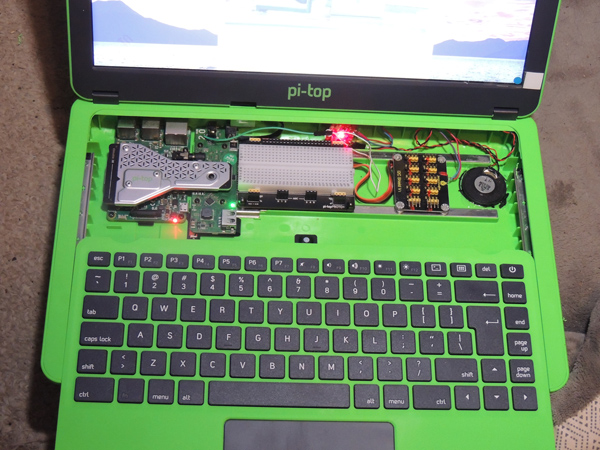
The modified Pi-Top, with stock breadboard, additional I2C shield, amplifier board (with bright red LED) and tiny speaker. Click to enlarge.
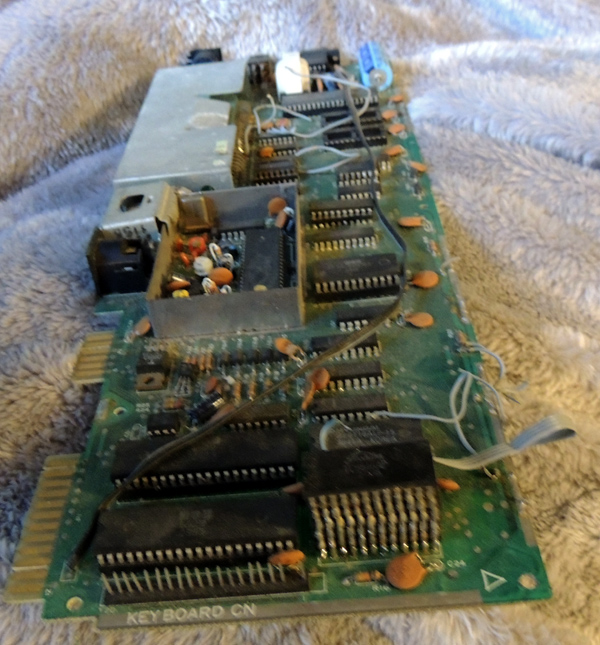
I still have the mostly-intact remains of the motherboard from my old VIC-20. Here you can see the stacked static RAM/ROM chips in the lower right.
Most of my custom TTL logic had been on a series of soldered breadboards that had been attached to the right edge of the motherboard (in this orientation).
(It's possible this is not the original VIC-20 I bought in 1983 but one I got later and migrated some of the original VIC-20's features to).
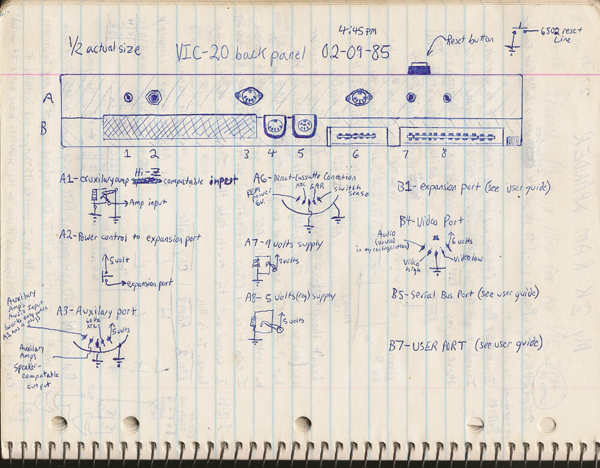
A diagram of the back panel of my old VIC-20, drawn Feb. 9, 1985. I was sixteen at the time.
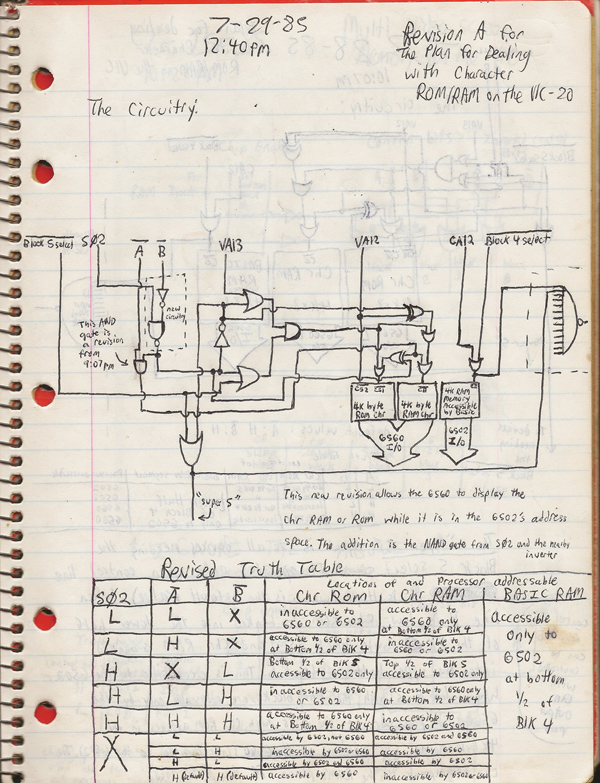
The logic system for overlaying writeable RAM overtop the character ROM in my VIC-20, from July 29, 1985. I was seventeen at the time.
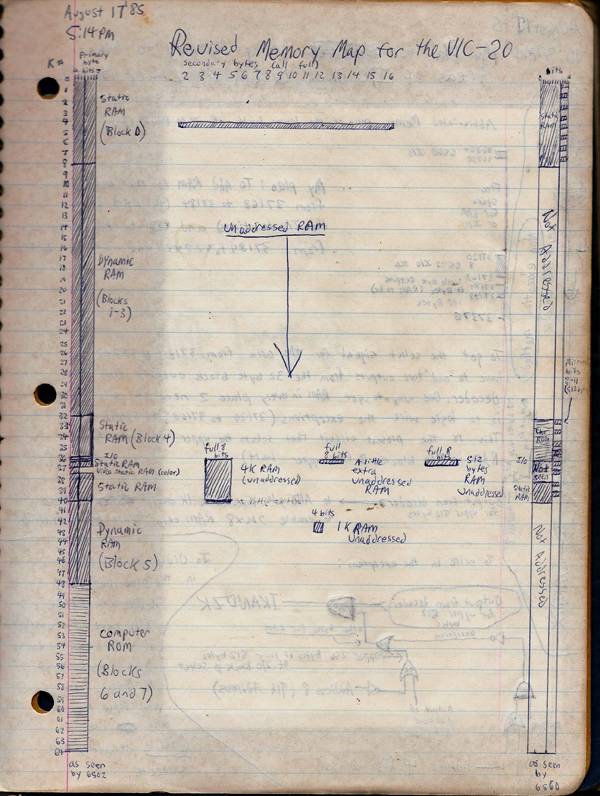
The end-stage memory map of my VIC-20 as of August 17th, 1985. Click to enlarge.
For linking purposes this article's URL is:
http://asecular.com/blog.php?221208 feedback
previous | next |




